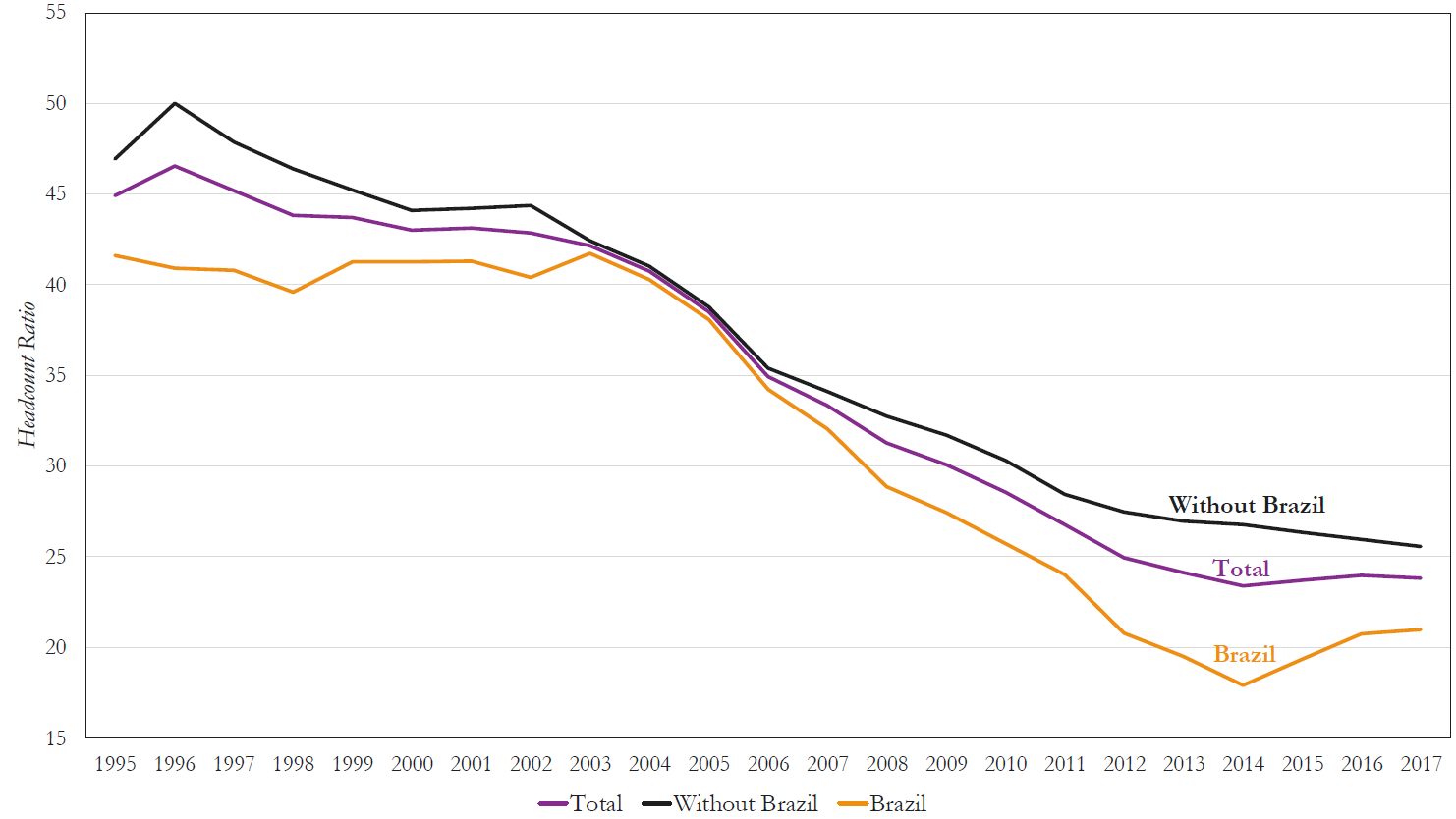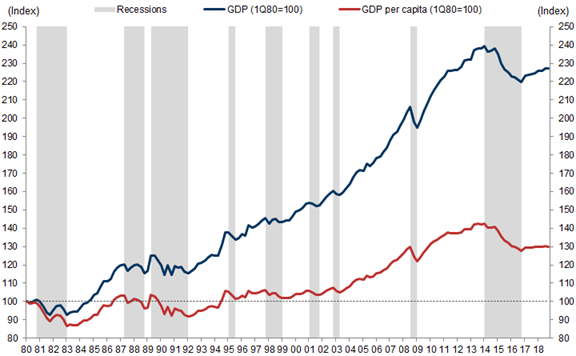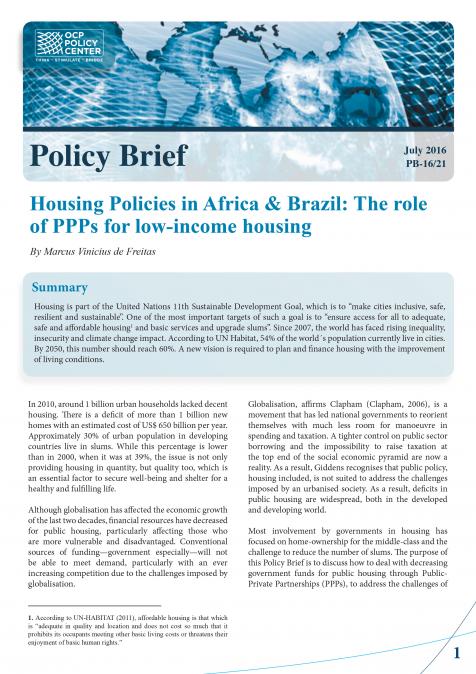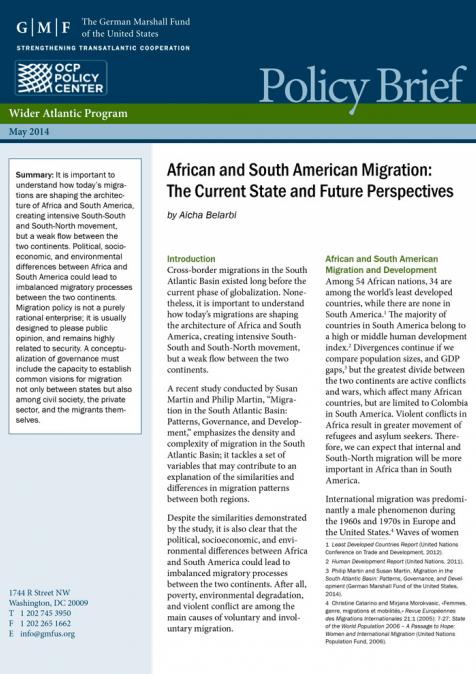Publications /
Opinion
Throughout my last 15 years working in multilateral institutions, many times around the world I was asked to speak about the success of poverty reduction in Brazil during the new millennium. Last week, someone who was on such an occasion in October 2013 in Nairobi asked me what my numbers had become after these recent years of precarious macroeconomic performance and high unemployment in the country. I replied that they have changed ... in part!
Indeed, the fact that, even without Chinese economic growth rates, the percentage of Brazilian families living below the poverty line fell considerably over the period from 2003 to 2015 - with the proportion of families with income less than US$ 5.50 moving down 24 percentage points, from 41.7% to below 18% - called much attention in the world (Chart 1). The number of families living in extreme poverty, with incomes below US$ 1.90 per day, decreased from over 20 million in 2003 to 5.6 million in 2014.
Chart 1 – Poverty in the Region with and without Brazil

Source: The World Bank, “Effects of the business cycle on social indicators in Latin America and the Caribbean: when dreams meet reality”, April 2019.
The Brazilian performance in other social indicators in the same period was also in the same direction of improvement. The unemployment rate fell from levels above 12% in 2003 to 4.3% in December 2013. Indicators of housing and schooling also evolved favorably.
The deep recession that began in the second half of 2014, followed by slow recovery and continued high unemployment (chart 2), has been taking its toll. According to a report released last month by the office of the World Bank's chief economist for Latin America and the Caribbean, some 7.3 million Brazilians - 3 percentage points of the population - had returned in 2017 to below US$ 5.50 daily.
Chart 2 – Real GDP Total and Per Capita

Source: Goldman Sachs, “Brazil: two lost decades in forty years – could it lose half a century?”, 3 May 2018.
The implicit question of my interlocutor related to my narrative about the rescue of people from the poverty in the country, i.e. to what extent my numbers in 2013 reflected the extremely favorable conjuncture of then and would therefore be reversible. The above-mentioned World Bank report helped me in answering this question as it brought an exercise of separation of transitory factors - associated with business cycles – from others of a more structural character, persistent or permanent, in Latin America and the Caribbean, including Brazil.
The region is among the parts of the world that most exhibit successions of ups and downs in the economic environment and where the sensitivity of social indicators to such cyclical fluctuations is high. This appears mainly in unemployment rates, while indices associated with basic needs - housing, education, etc. - move more persistently, following the trend of economic growth. Monetary poverty - income below US$ 5.50 a day - although depending more on macroeconomic fluctuations than in other developing areas of the world, responds both to temporary shocks - favorable or unfavorable - and to structural factors.
The Brazilian economy started, in 2003, a long period of expansion of an economic cycle propelled by the rise of international commodity prices, favorable domestic and foreign credit conditions and a strong ascent in domestic consumption. The growth trend remained low, for structural reasons that we address here and here. The over-life of the expansionary phase was obtained in Dilma Roussef's first government, but not without consequences in terms of a substantial increase in public and private indebtedness with no counterpart in terms of revitalization of private investments and economic growth.
According to estimates by the World Bank, more than half of the reduction in monetary poverty in Brazil between 2003 and 2014 can be explained by those cyclical factors, while 13% could be associated to the (weak) structural growth trend and a third to active policies of redistribution of income.
As a response to my interlocutor, therefore, it should be noted that part of the exuberant fall in poverty levels in Brazil between 2003 and 2014 has been reversed by the unfavorable macroeconomic environment since then, undoing about 12.5% of the previous improvement (3 out of 24 percentage points). Considering the depth of the per capita income dip and the weight of cyclical factors in Brazil, the negative impact could have been much worse.
It is also worth emphasizing the importance of structural reforms to increase the growth trend if poverty is to be reduced in a persistent way in the country. Finally, existing social protection mechanisms - such as the Bolsa Família, the Brazilian conditional cash transfer mechanism - must be safeguarded and improved in the ongoing fiscal adjustment, given their role in the fight against poverty, particularly relevant in times of economic downturn.



